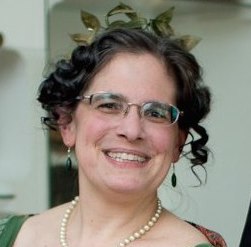The classic schottische of the mid-nineteenth century and its later incarnation, the Barn Dance (a.k.a. the Military Schottische and the Pas de Quatre) had mostly faded from fashionable ballrooms by the late 1910s. But a few very simple schottisches or schottische-like sequences turn up now and then in dance manuals and on sheet music of the 1910s, often under the name “gavotte”, a musical form with the same 4/4 meter characteristic of the schottische.
La Gavotte is a short sequence taken from Professor A. Lacasse’s La Danse apprise chez soi, published in Montréal in 1918. There were many dances called “gavotte” in the late nineteenth and early twentieth centuries, not all of them in 4/4 time, so while this particular gavotte may have been locally popular in Montréal, it should not be considered any sort of definitive gavotte for the 1910s or any other era.
Lacasse described La Gavotte as one of several “Danses de Fantaisie”, a group which also included the Ostende, the Spanish Boston, Bellfield, and the Oxford Minuet. It’s hard to know exactly how to translate “danses de fantaisie”, which literally means “imaginative dances”, but all of those given are sequences, though some are very short ones. He noted that these dances were still on programs and were danced mainly “in our private families”, which implies that they were traditional favorites rather than the very latest fashion.
La Gavotte apparently was notable enough to be listed on the title page, along with the one-step and foxtrot, as one of the principal dances in the book, though that may well be a sign more of how trendy the name “gavotte” was than of the popularity of this particular sequence.
Here’s Lacasse’s original description:
La “Gavotte”
Pour danser la “Gavotte,” le couple se tient vis-à-vis l’un de l’autre, comme dans la “Valse” et le “Two-Step.” Le cavalier fait un pas de côté en écartant le pied gauche et en le faisant suivre immédiatement du pied droit, puis il repète une seconde fois ce double pas. La dame, de son côté, fait la même figure avec le pied opposé. Après quoi le cavalier fait quatre pas de marche en avancant parallèlement à la dame qui fait quatre pas de marche en reculant. Ils finissent par quatre pas de “Two-Step,” trois en tournant à droite et le quartième [sic] à l’inverse.
and my colloquial translation:
The “Gavotte”
To dance the “Gavotte,” the couple hold each other, facing, as in the “Waltz” and the “Two-Step.” The gentleman makes a step to the side, separating the left foot, and in doing so immediately follows it with the right foot, then he repeats this double step a second time. The lady, for her part, does the same figure with the opposite foot. After which the gentleman makes four march steps forward concurrently with the lady, who makes four march steps backward. They end with four steps of “Two-Step,” three turning to the right and the fourth in reverse.
The sequence is extremely simple and the reconstruction entirely straightforward. The couple takes a normal ballroom hold, gentleman facing the nearest wall and lady facing the center of the room. The steps below are for the gentleman; the lady dances opposite.
Count
1234 Step side left, close right, side left, close right along line of dance
(make a quarter-turn to the left so the gentleman faces line of dance)
5678 Four steps forward (lady backward), progressing along line of dance
(make a quarter-turn to the right so the gentleman faces the wall)
1&2, 3&4, 5&6 Three measures of two-step (one and a half turns), turning to the right (clockwise)
7&8 One measure of two-step (half-turn) turning to the left (counter-clockwise)
(end with the gentleman facing the wall again)
(Edited 3/15/21 to add: this would perhaps better be called just a Canadian gavotte. It appears as “The Gavotte” in a second source, the English-language Complete Dance Instructor by Ottawa-based Professor Frank H. Norman, which clarifies that the four steps along the line of dance are done in Yale position, with the dancers right side to right side, rather than facing, and just gives four bars of turning two-step at the end, without the reverse half-turn.)
Notice that this is quite similar to the Pan-American Glide, published in the compilation Dance Mad in St. Louis, Missouri (USA) in 1914. With the exception of the sudden reverse turn at the end, it is merely a different arrangement of the same three elements (side-closes, walks, and two-steps). Unlike the Pan-American Glide, La Gavotte closely follows the classic schottische pattern of eight counts progressing without any substantive turning followed by eight counts covering two full turns.
La Gavotte is an easy dance for beginners. The only real challenge in performance is the final eight counts, when the dancers go one and a half turns of two-step to the right (clockwise) followed immediately by a half-turn in reverse. The leader should be sure to dampen the turning momentum on the third half-turn enough to be able to manage the abrupt change of direction. Underturning slightly will help.
The classic 1910s gavotte tune was “The Glow-Worm” (1907), to which Anna Pavlova danced a famous stage gavotte. There is a good recording by The National Concert Band of America (paid link) and another by Ian Whitcomb on the album Titanic: Music As Heard On The Fateful Voyage
(paid link). La Gavotte also works quite well to any gently-paced schottische.


Leave a Reply